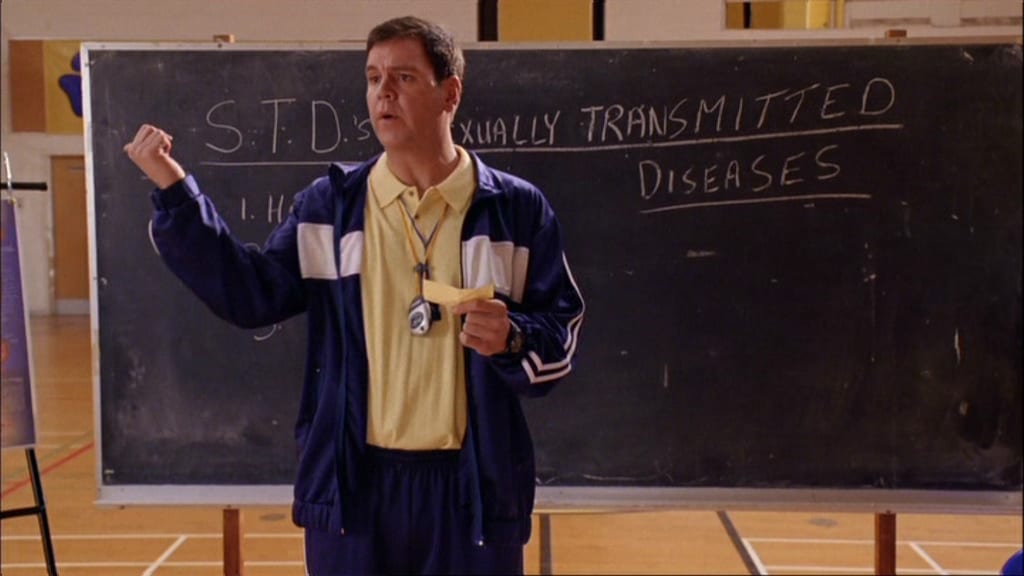We all remember the painstakingly awkward moments of our secondary school careers, the ones where teachers tried wholeheartedly to deliver a sex education class; fake penis in one hand, budget-branded condom in the other. We often recall a room full of an array of blushing adolescents, watching their once innocent maths teacher demonstrate a variety of contraceptive tools, who attempted to ease the situation with a touch of lacklustre humour. The fact of the matter is, our memories of sex education are so vivid because there was such an absence of it, and there still is. So, you’ve learnt how to put a condom on, congratulations! You’re now obviously equipped to deal with the multitude of scenarios surrounding sex. The sad reality is that many young people aren’t educated to deal with sex, relationships and sexuality, leaving it down to YouTube to inform young people on everything and anything they may experience.
Discussions of sex in the classroom juxtapose those on YouTube, leading figure heads of this YouTube sex education revolution include Laci Green, Hannah Witton and Shannon Boodram have openly discussed the topic of sex on their channel and in turn have created a safe space for young people to learn the ins and outs of it all. The thing that makes sex education on YouTube better than anything that has existed in our classrooms is the fact that not only intercourse, more specifically heterosexual intercourse, is covered. All aforementioned creators have created videos regarding subjects all the way from consent and BDSM, to porn and masturbation and many of their videos have hit over a million view, highlighting the popularity of their content.
But it’s not just vloggers who are opening up conversations, the police are using the platform to also spread a message. In late 2015 a video titled ‘Tea and Consent’ posted by Thames Valley Police went viral, and now holds over 1 million views. The video outlines the ideas of consent in a precise and entertaining way, again reiterating the importance of YouTube in breaking down the barriers we have against comprehensive sex education. Videos created by these charities, vloggers and production companies have provided the least awkward way to become distinguished with the variety of topics that fall under the ‘sex education’ umbrella.
Perhaps the most important element of these educative videos is their LGBTQIA+ inclusion, many videos across YouTube cover sexuality and gender dysmorphia, conversation that has ceased to exist in the classroom. As a result of this courageous effort on YouTube, LGBT youth are no longer excluded and left in the dark about sex and relationships and the fact our education system is yet to include the LGBT community is disgraceful, which is why we must place emphasis on the role of YouTube not only in sex education but also in helping LGBT youth prosper. Young LGBT citizens want to know what their consent looks like, they want to know what their relationships should function, they want to know what their contraception looks like and YouTube is there to offer all the answers.
Last October, a NY Times self-proclaimed feminist writer defined these vloggers as “silly sex girls on YouTube who aren’t doctors,” a particularly degrading title given that the benefits these creators have given to young people across the world are astonishing. Not only is this interpretation of their work demoralising, but the statement is wholly false. It is very clear even from opening sequences of a well-made video that thorough research has been done, and it is quite often that these YouTubers will go into great scientific depth about their chosen topics. Sadly, it is obvious from the lack effective action from the older generation to improve our sex education system that there exists a consensus among the majority that it just isn’t necessary. But of course, these are the people who have learnt through experience, rumours and hear-say and the classic British stiff upper lip image has taught us to refrain from breaking these taboos, therefore it has only been in recent years we have seen small, yet important, changes in the way sex is taught in schools. Universities seem to be the most pressing in their implementation of sex education, with sexual consent workshops becoming popular at universities across the UK.
In 2016, leading institution Oxford University outlined their consent workshop for freshers as “compulsory” and has seemingly led by example for other universities who have since followed in their step. Despite this advance in the university sphere, a similar pattern is yet to take shape across secondary schools – a time when these workshops can be deemed just as necessary.
Living in an increasingly secular and diverse society should surely equal progression in the sex education we offer, and although we have seen improvements, this seems not to be the case. Fortunately for our generation, YouTube has been the helping hand to guide us when it comes to sex and the intricacies that surround it, but for those with no access to these overtly liberal platforms there is no place for information. Our governments, schools, and even ourselves must be more committed to providing comprehensive sex education for the young people that populate our earth. Thus far, the only place where we have broken the taboo against sex education is behind a screen, and although this has proved marginally successful it remains a necessity that we manoeuvre this healthy discussion from media outlets to the classrooms of today.
Words by Georgia Hinson
